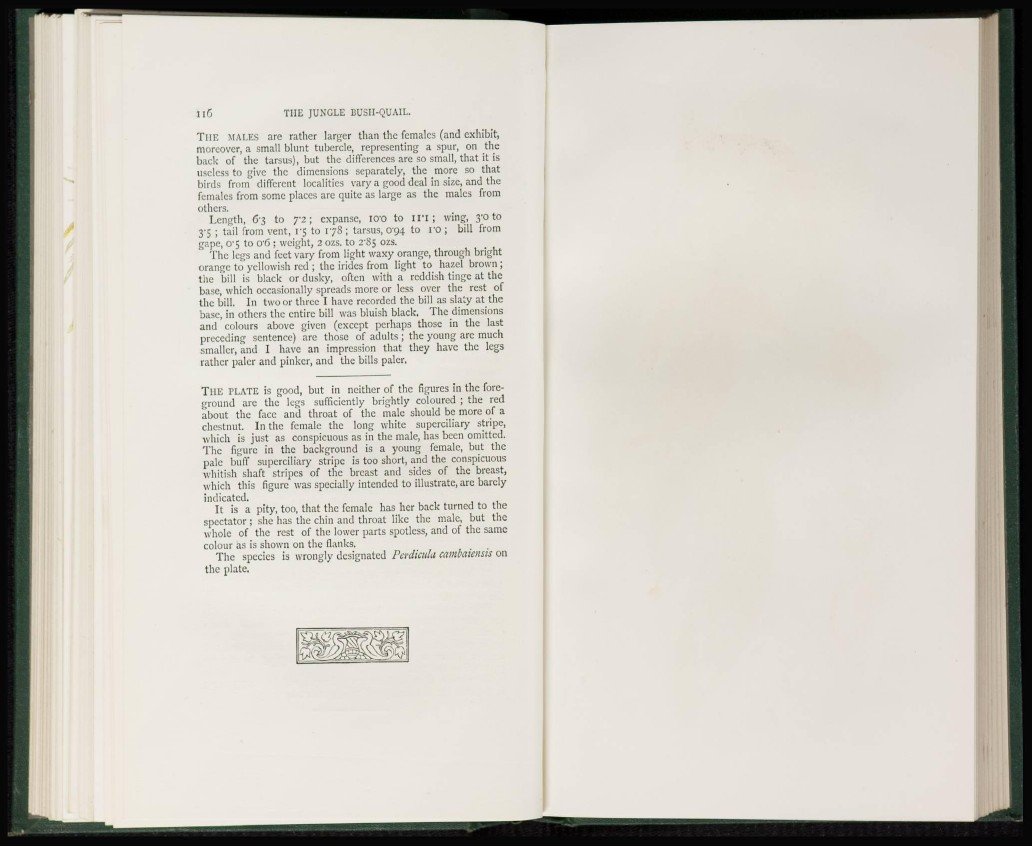
THE MALES are rather larger than the females (and exhibit,
moreover, a small blunt tubercle, representing a spur, on the
back of the tarsus), but the differences are so small, that it is
useless to give the dimensions separately, the more so that
birds from different localities vary a good deal in size, and the
females from some places are quite as large as the males from
others.
Length, C'3 to T2; expanse, io'O to i i t ; wing, 3P0 to
3'5 ; tail from vent, imj to 178 ; tarsus, 0'94 to ro ; bill from
gape, 0'5 to 0'6 ; weight, 2 ozs. to 2'S5 ozs.
The legs and feet vary from light waxy orange, through bright
orange to yellowish red ; the irides from light to hazel brown ;
the bill is black or dusky, often with a reddish tinge at the
base, which occasionally spreads more or less over the rest of
the bill. In two or three I have recorded the bill as slaty at the
base, in others the entire bill was bluish black. The dimensions
and colours above given (except perhaps those in the last
preceding sentence) are those of adults ; the young are much
smaller, and I have an impression that they have the legs
rather paler and pinker, and the bills paler.
T H E PLATE is good, but in neither of the figures in the foreground
are the legs sufficiently brightly coloured ; the red
about the face and throat of the male should be more of a
chestnut. In the female the long white superciliary stripe,
which is just as conspicuous as in the male, has been omitted.
The figure in the background is a young female, but the
pale buff superciliary stripe is too short, and the conspicuous
whitish shaft stripes of the breast and sides of the breast,
which this figure was specially intended to illustrate, are barely
indicated.
It is a pity, too, that the female has her back turned to the
spectator ; she has the chin and throat like the male, but the
whole of the rest of the lower parts spotless, and of the same
colour as is shown on the flanks.
The species is wrongly designated Perdicula cambaiensis on
the plate.